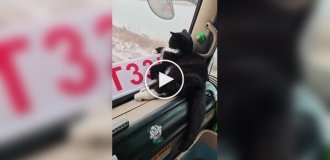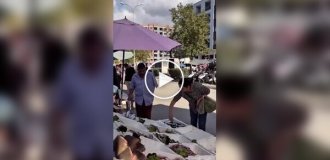Why Fiji Police Wear Fancy White Skirts (5 Photos)
People who have flown to Fiji on holiday may at first be a little surprised to see police officers at the airport, and then patrolling the streets in rather fancy snow-white skirts. 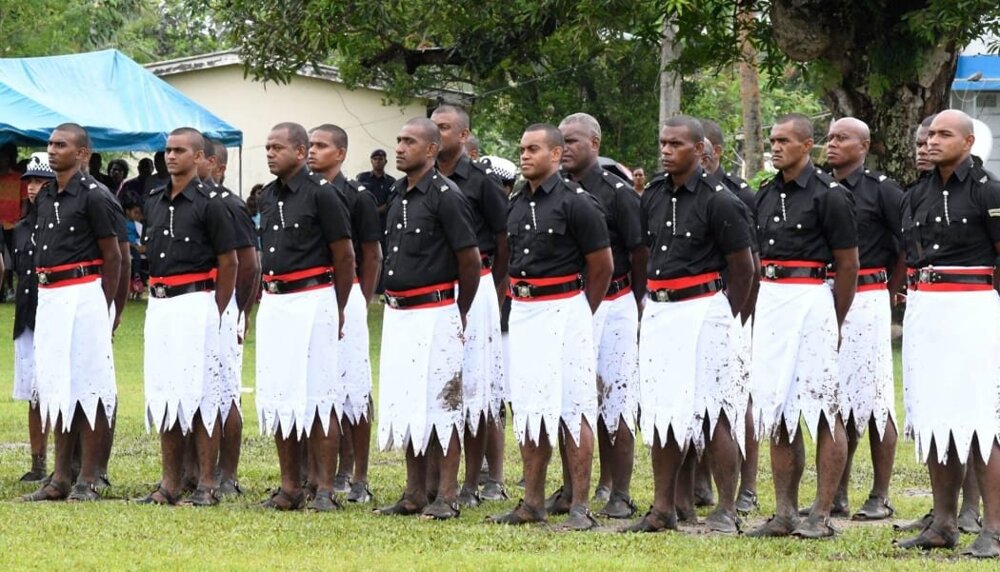
Are skirts a practical element of uniform for a police officer who needs to carry a weapon, handcuffs and be ready at any moment to engage in a fight with a lawbreaker?
Why do police officers in Fiji wear skirts and not, for example, trousers or shorts?
A brief excursion into history 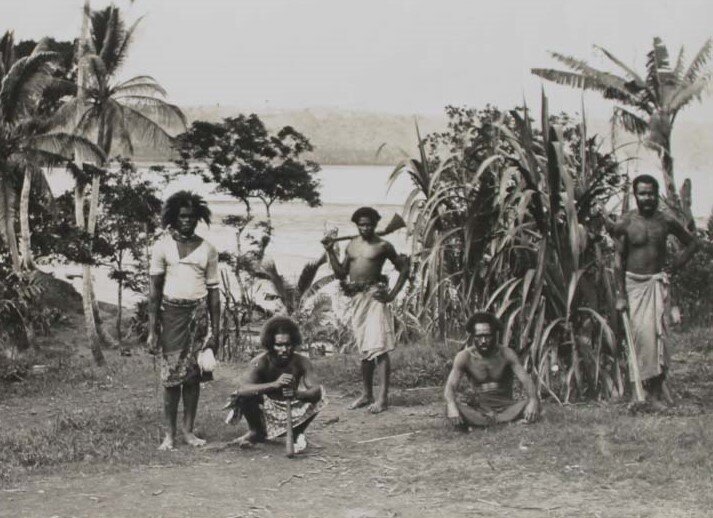
Indigenous people of Fiji in the late 1800s
In 1643, Dutchman Abel Tasman became the first European to set foot in Fiji. Then these territories were explored by the famous captain William Bligh, who officially put Fiji on his maps.
Soon, sailors began to visit Fiji en masse, where a group of scattered tribes of Melanesians lived, wearing bamboo clothing and building primitive dwellings. However, these tribes (although they were at enmity with each other) were friendly towards the Europeans.
Many of the first early European settlers in Fiji were pirates, escaped convicts from a penal colony in Australia, and shipwrecked sailors. In the mid-19th century, the first Christian missionaries arrived on the islands, which contributed to the end of the inter-tribal wars that took place on these islands.
In 1874, Fiji officially ceded to Great Britain. At the same time, English laws were introduced in Fiji, Western-style clothing was introduced into fashion, and stone houses were built. The indigenous population had to obey local laws and began to wear European clothing. Including military and police uniforms. 
However, the indigenous population refused to fully follow the rules of the British and firmly stood on the fact that their people would wear mixed traditional and European clothing (that is, Sulu skirts combined with shirts).
The Fijians believed that wearing the sulu skirt, with pointed ends reminiscent of pandanus plants, would imbue their uniform with a deeper symbol of the hybrid "formation" of Fiji, where both Europeans and indigenous people lived who did not want to be deprived of their history and way of life.
Indigenous people wore skirts until 1961, when the British wanted to introduce official police uniforms. 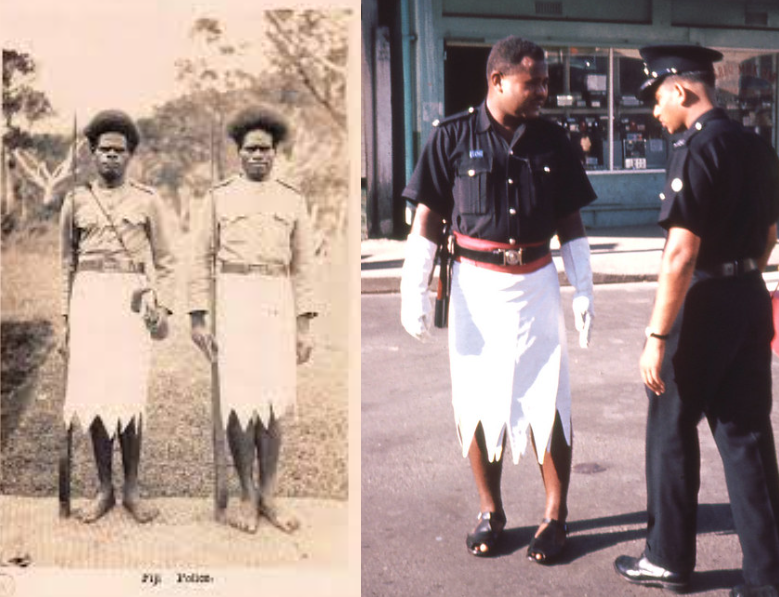
In early March 1961, the British decided to force the white Sulu skirts of Fijian policemen to be removed.
In March 1961, the police department's public affairs office issued a statement that read: "The blue shirt with Sulu skirts is not practical clothing for everyday police duty. Sulu is not comfortable for everyday use. It is not possible to comfortably carry a police baton, pistol and handcuffs along with a skirt. This is uncomfortable clothing when communicating with an aggressive person."
Then-Police Commissioner Beaumont decreed that Sulu skirts should only be worn by police officers holding the rank of officer, and only during parades or official holiday events.
The mayor of Suva (the capital of Fiji) and the chairman of the Fiji Tourism Bureau, Charles Stinson, protested to the British Crown and Commissioner Beaumont for abolishing the “distinctive Fijian police uniform” and replacing it with European “khaki shorts and gray shirts”, depriving the local population of their identity.
The two were immediately joined by most of the indigenous population in opposing the change in uniform and the transition from white Sulu skirts and sandals to European shorts with shoes. 
“The police uniform is a mixture of European clothing (shirt) and traditional Fijian clothing (skirt), making our police force a distinctive force. We understand that the Commissioner of Police is committed to efficiency, but taking away the Sulu skirt, which is part of the Fijian way of life, will be very unpopular with the Fijian people,” Fijian Association President and Legislative Council member Ravuama Vunivalu told The Fiji Times.
Another prominent Fijian of mixed heritage, Maurice Scott, stated:
“Just as the London policeman became a symbol of order and politeness, despite his ridiculous helmet, so the Fijian policeman will be symbolized as friendly, smiling, polite and always ready to help, proudly wearing a sulu skirt.”
Maurice Scott subsequently became Sir Maurice Scott and Speaker of the Fiji Parliament following the country's independence from Britain in 1970.
Whenever anyone in the government said it would be worthwhile to bring the police up to modern standards by updating their uniforms, Maurice said that tourists would be very disappointed to see their photogenic constable suddenly dressed in dull khakis and gray boots.
“This will destroy our tourism and the attractive image of Fiji, which we have been building for decades, at least with the help of our traditional sulu that tourists like,” Maurice said.
Since then, any attempts to change the official uniform have led to discontent among the local population, which is why police officers still wear white skirts as part of their historical heritage. However, over the past few years, the situation has begun to change and some police officers are still starting to wear trousers.

